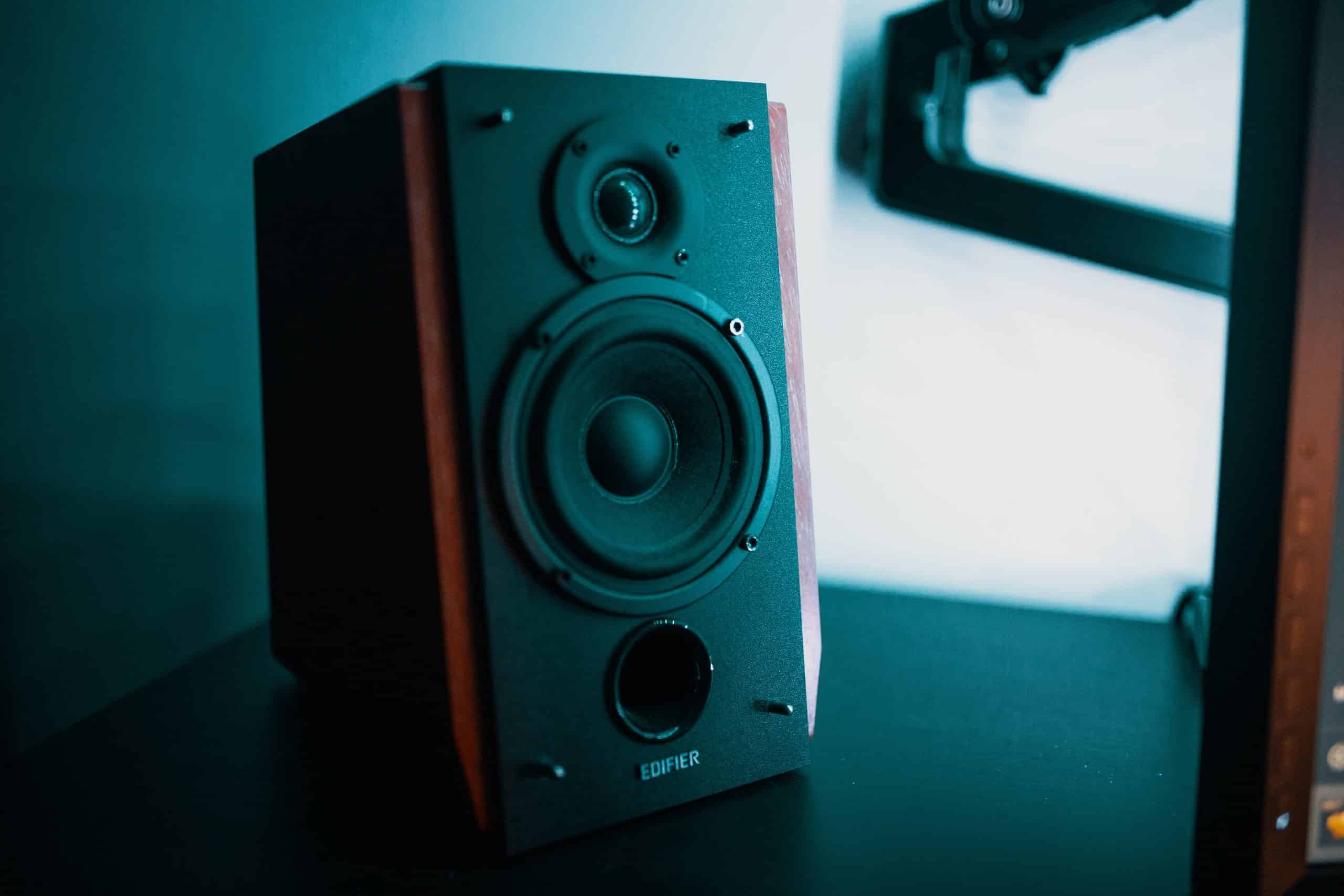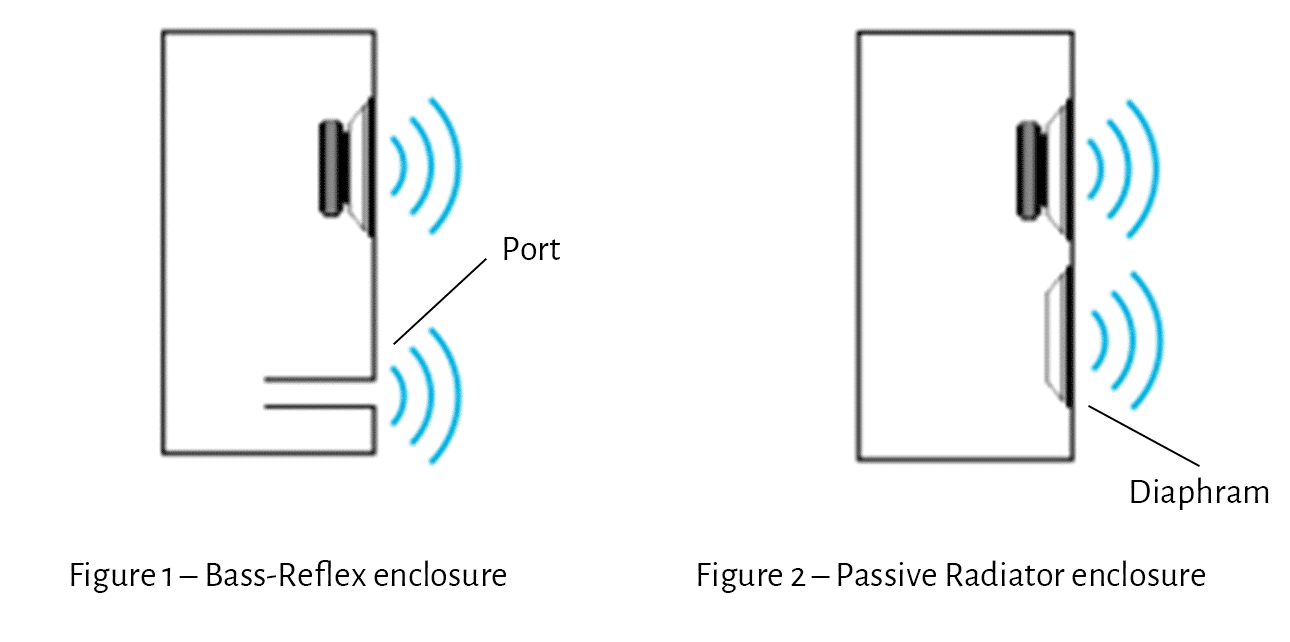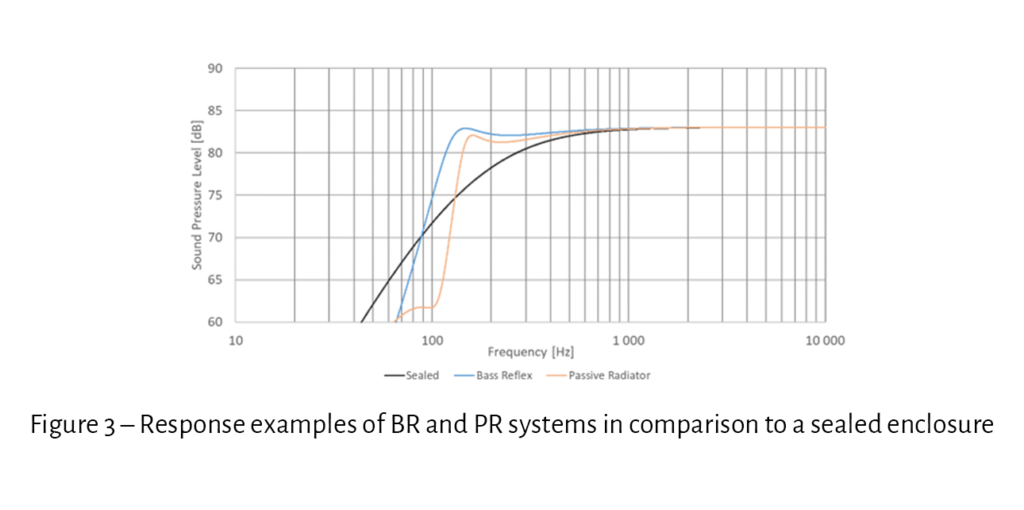
When integrating a speaker into a device, it is essential to isolate its front radiation space from that of the rear. This is done in practice by building an enclosure dedicated to the transducer.
However, by doing so the rear volume of air applied to the speaker becomes an acoustic load acting as a high-pass filter on the system response: the smaller the volume, the more the low frequencies are filtered.
Two well-known techniques in the industry for recovering some low frequencies are the Bass-Reflex (BR) and the Passive Radiator (PR), respectively invented by A. L. Thuras in 1932 and H. Olson in 1935. These two techniques are called “passive” in the sense that they do not require additional electrical energy.
As illustrated in Figure 1, a BR system is simply made up of a tube (also called port), often cylindrical and integrated into the enclosure pierced for this purpose. In this configuration, the “cavity + port” assembly together forms an acoustic resonator identical in all respects to a Helmholtz one. If well-tuned, this resonator, driven by the loudspeaker, will radiate sound, thus extending the low frequency response (as in the example reported in Figure 3).
A PR system, shown in Figure 2, is based on the same resonator principle, but involving a diaphragm instead of a port. Because this diaphragm has suspensions, a notch (resulting from the “suspensions-diaphragm” assembly resonance) appears in the extended frequency region, thus causing a steeper roll-off than for a BR solution.
When it comes to discussing pros and cons, this notch property of PR systems typically degrades transient response. On the other hand, BR solutions often bring non-linearities, resulting from air turbulence occurring in the port.
Among the many advantages and disadvantages that can be found in the literature, we will notice that BR solutions remain cost-effective and very easy to design, while PR systems become relevant when the size of the enclosure decreases, in addition to offer total sealing against dust and water.


Are you planning to boost the bass content of your audio device? SELTECH can provide you with a fully tailored enclosure solution.
Review by:
– Frédéric Fallais, Acoustic Application Engineer
– Arthur D., Acoustic Technician

